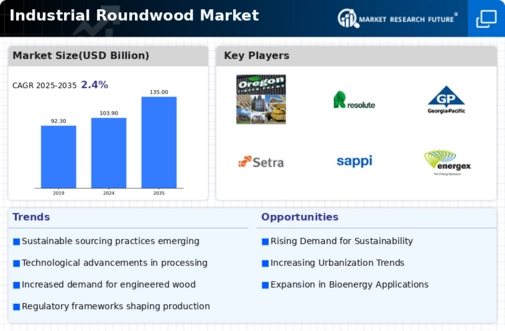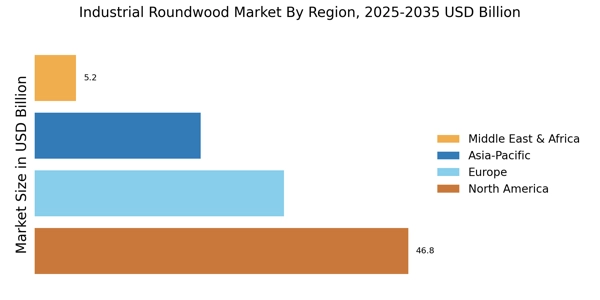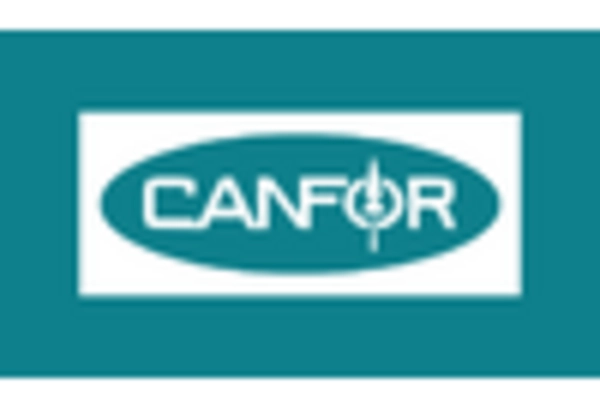Regulatory Frameworks
The establishment of regulatory frameworks aimed at promoting sustainable forestry practices is likely to influence the Industrial Roundwood Market. Governments are increasingly implementing policies that encourage responsible sourcing and penalize illegal logging. For instance, regulations mandating traceability in the supply chain are becoming more prevalent, which could enhance consumer trust and market stability. In 2023, countries with stringent forestry regulations saw a 20% increase in certified roundwood production, indicating a positive correlation between regulation and market growth. Such frameworks may drive demand for legally sourced industrial roundwood, thereby shaping market dynamics.
Sustainability Initiatives
The increasing emphasis on sustainability initiatives appears to be a pivotal driver for the Industrial Roundwood Market. As industries strive to reduce their carbon footprints, the demand for sustainably sourced roundwood is likely to rise. This shift is evidenced by the growing number of certifications for sustainable forestry practices, which could enhance market credibility. In 2023, the market for certified wood products reached approximately 15 billion USD, indicating a robust consumer preference for environmentally friendly options. Consequently, companies that prioritize sustainable sourcing may gain a competitive edge, potentially leading to increased market share in the Industrial Roundwood Market.
Technological Advancements
Technological advancements in harvesting and processing techniques are transforming the Industrial Roundwood Market. Innovations such as precision forestry and automated machinery are enhancing efficiency and reducing waste. For instance, the adoption of drones for aerial surveys and monitoring has improved resource management, allowing for more accurate assessments of timber quality and quantity. In 2024, the market for forestry technology is projected to grow by 10%, reflecting the industry's shift towards more efficient practices. These advancements not only streamline operations but also contribute to sustainability goals, thereby reinforcing the demand for industrial roundwood.
Diversification of Applications
The diversification of applications for industrial roundwood is emerging as a significant driver within the Industrial Roundwood Market. Roundwood is increasingly utilized in various sectors, including construction, furniture manufacturing, and bioenergy production. The construction sector alone accounted for approximately 40% of roundwood consumption in 2023, highlighting its critical role in building materials. Additionally, the rise in demand for engineered wood products, such as cross-laminated timber, suggests a shift towards innovative uses of roundwood. This trend may lead to a broader market base and increased opportunities for stakeholders in the Industrial Roundwood Market.
Economic Growth in Emerging Markets
Economic growth in emerging markets is poised to be a crucial driver for the Industrial Roundwood Market. As these economies expand, the demand for construction materials and furniture is likely to surge, leading to increased consumption of roundwood. In 2024, it is anticipated that emerging markets will contribute to a 15% rise in global roundwood demand. This growth is fueled by urbanization and rising disposable incomes, which may lead to higher investments in infrastructure and housing. Consequently, stakeholders in the Industrial Roundwood Market could benefit from tapping into these burgeoning markets, potentially enhancing their revenue streams.


















Leave a Comment